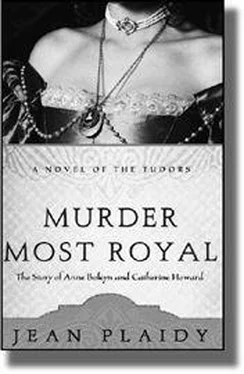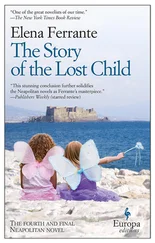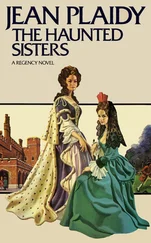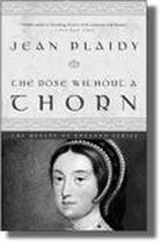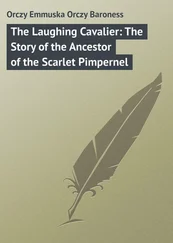Plaidy, Jean - Royal Sisters - The Story of the Daughters of James II
Здесь есть возможность читать онлайн «Plaidy, Jean - Royal Sisters - The Story of the Daughters of James II» весь текст электронной книги совершенно бесплатно (целиком полную версию без сокращений). В некоторых случаях можно слушать аудио, скачать через торрент в формате fb2 и присутствует краткое содержание. Жанр: Старинная литература, на русском языке. Описание произведения, (предисловие) а так же отзывы посетителей доступны на портале библиотеки ЛибКат.
- Название:Royal Sisters: The Story of the Daughters of James II
- Автор:
- Жанр:
- Год:неизвестен
- ISBN:нет данных
- Рейтинг книги:4 / 5. Голосов: 1
-
Избранное:Добавить в избранное
- Отзывы:
-
Ваша оценка:
- 80
- 1
- 2
- 3
- 4
- 5
Royal Sisters: The Story of the Daughters of James II: краткое содержание, описание и аннотация
Предлагаем к чтению аннотацию, описание, краткое содержание или предисловие (зависит от того, что написал сам автор книги «Royal Sisters: The Story of the Daughters of James II»). Если вы не нашли необходимую информацию о книге — напишите в комментариях, мы постараемся отыскать её.
Royal Sisters: The Story of the Daughters of James II — читать онлайн бесплатно полную книгу (весь текст) целиком
Ниже представлен текст книги, разбитый по страницам. Система сохранения места последней прочитанной страницы, позволяет с удобством читать онлайн бесплатно книгу «Royal Sisters: The Story of the Daughters of James II», без необходимости каждый раз заново искать на чём Вы остановились. Поставьте закладку, и сможете в любой момент перейти на страницу, на которой закончили чтение.
Интервал:
Закладка:
“I thank God, my dearest daughter,” he told her, “for I could not have borne to see you unhappy as your sister was.”
After that she felt she owed it to them all to be happy. It was not difficult when she considered George.

There was no reason why the marriage should be delayed. The day chosen was appropriate, being St. Anne’s Day, and at ten o’clock at night in St. James’s chapel the ceremony took place. The bride was given away by her uncle the King; and afterward there was a brilliant banquet. There was rejoicing in the streets, and the sounds of music and the light from the bonfires penetrated the palace.
Another Protestant marriage! said the people, who had welcomed the Orange marriage for the same reason. James’s addiction to Catholicism was always a sore point with those who declared they would have no popery in England. Mary and Anne could well be sovereigns of England and the people had no intention of standing mildly aside while they were made into little Catholics. But there was no danger of that. Wise King Charles—always with an eye on the main chance—had decided. Not only had he taken the education of the Princesses out of their father’s hands, but he had found Protestant bridegrooms for them.
The fact that Marie Thérèse, the Queen of France, had just died, made the marriage doubly welcome. Louis, a widower in need of a wife, made a dangerous situation, for all knew that James would have been delighted to see his daughter the wife of the Catholic King of France.
But all was well; she was safely married to Protestant George; so they danced with glee around their bonfires and declared the bride to be beautiful and the bridegroom gallant while Anne and her husband sat side by side, eating heartily.
They had no qualms about each other. They were so much alike; peaceable, comfortable people, who liked to indulge the pleasures of the flesh—eating, drinking, and those yet to be discovered.
What a different bride was Anne from her shuddering sister! When the curtains were drawn about the bed by the royal hand of King Charles of England, when he made his ribald comments on the duties which lay ahead of them, Anne and George turned to each other and embraced.
Everything was natural, simple, pleasantly enjoyable without arousing ecstasy. This was symbolic of the life they would share together.
MRS. MORLEY AND MRS. FREEMAN
 ow that Anne was a married woman she must have her separate household. The Duke of York did not wish her to be too far from him, and Charles, delighted with the success of the marriage and to see Anne growing happier every day, for he disliked tears and remembered those of Anne’s sister Mary—as indeed who would ever forget them?—had said the happy pair should have the Cockpit.
ow that Anne was a married woman she must have her separate household. The Duke of York did not wish her to be too far from him, and Charles, delighted with the success of the marriage and to see Anne growing happier every day, for he disliked tears and remembered those of Anne’s sister Mary—as indeed who would ever forget them?—had said the happy pair should have the Cockpit.
The Cockpit was close to Whitehall and had been built by Henry VIII as a lodge, set apart from the Palace, where he had indulged his love of cockfighting. It was a pleasant residence and Anne was enchanted with it. Close by was St. James’s Palace, where her father was often in residence; and he too was pleased to have his beloved daughter such a near neighbor; for as he said, he had but to walk across the park to visit her.
Sarah was a little disturbed, for she remained in the service of the Duchess of York and although this meant that she could see Anne frequently, now that the Princess was married, she was already on the point of relying more on her husband than on her friend.
Sarah’s was a true dilemma. Much good had come to her and John through the Duke of York; and one must not forget that he was the heir presumptive to the throne. The King had been ailing over the last year and although he was still a vigorous man, he was one who took his main pleasure no less zealously now than he had ten years before. James might soon be King of England and how much better it was to be in the service of the Queen of England than in that of a Princess who was not even next in succession.
The Duchess had been kind to Sarah over her marriage; but Anne was ready—or had been before her marriage—to take Sarah’s advice in all things.
What to do? Consult with John. John was going to be a brilliant soldier, but Sarah trusted her own diplomacy more than his. She knew that he would say: Stay as you are. We are doing well.
Relinquish Anne? It was unthinkable and yet perhaps in a few years James Duke of York would be king and Mary Beatrice of Modena queen.
When she was disturbed Sarah liked to walk alone, so she slipped on a cloak and left the Palace.
As she crossed the Park she remembered how a short while ago people used to gather there to see His Majesty play pell mell. They had said nobody could drive a ball as he did and the people would applaud when he sent his halfway down the avenue, as though, they said, it were shot from a culverin. He could no longer do that. Perhaps the game bored him; more likely he was too old.
There in the park it occurred to Sarah that momentous events were close. Greatness in people depended on their being a step or two ahead of others, in the right direction, just before it was apparent to everyone else that it was the right direction.
She had reached the streets. Very old people who remembered what it was like before the Restoration marveled at the streets of London as they were at this time. There was gaiety everywhere—if one could call painted women gay; they walked with their gallants, arms about each other, blatantly amorous. There was music from the river, drinking and dancing. How many bawdy houses were there along that short stretch of river? This was Restoration London. And how different it must have been under Cromwell and the Puritans! No theaters; no painted women; sombrely clad men; no fondling in the streets, for singing, dancing, and making love were crimes.
Change! thought Sarah. And all because the King had replaced the Protector.
She passed close to a group of people. A man was waving his arms and shouting: “No popery. Do you know what it means, my friends? You’ll smell the fires of Smithfield if we have the papists back.”
Sarah paused and listened, watching those grim determined faces.
“No popery!” It was a cry that one heard every day in the streets. The King was ailing. That was why the people so constantly shouted: “No popery!” They meant “No James!” No Catholic Duke of York should be their King.
If only one could peer into the future. It was not possible; one could only guess. But one could guess cleverly and shrewdly.
Already the Duke and his Duchess had been exiled. She thought of her beautiful dark-eyed royal mistress, Mary Beatrice of Modena with her foreign accent. She was clearly an Italian and Italians were papists.
As Sarah turned to the Palace she had made up her mind.

“Sarah,” said Anne , “you are not happy. Do not tell me you are for I know you too well.”
“I see it is no use hiding my fears from you, Madam.”
“John has been unfaithful.”
“No,” said Sarah. “Never.”
“He would not dare,” suggested Anne mischievously.
“He is too clever not to know what folly that would be.”
“Yes, he is very clever, your John; but you are not unhappy about that.”
“Oh, it is a matter which will not have occurred to you. But I have seen less of you lately.”
Читать дальшеИнтервал:
Закладка:
Похожие книги на «Royal Sisters: The Story of the Daughters of James II»
Представляем Вашему вниманию похожие книги на «Royal Sisters: The Story of the Daughters of James II» списком для выбора. Мы отобрали схожую по названию и смыслу литературу в надежде предоставить читателям больше вариантов отыскать новые, интересные, ещё непрочитанные произведения.
Обсуждение, отзывы о книге «Royal Sisters: The Story of the Daughters of James II» и просто собственные мнения читателей. Оставьте ваши комментарии, напишите, что Вы думаете о произведении, его смысле или главных героях. Укажите что конкретно понравилось, а что нет, и почему Вы так считаете.
